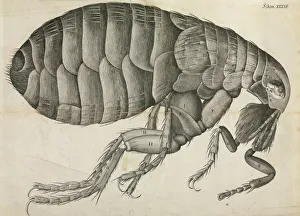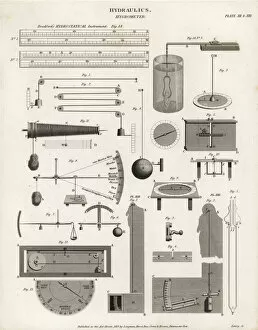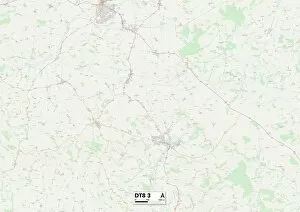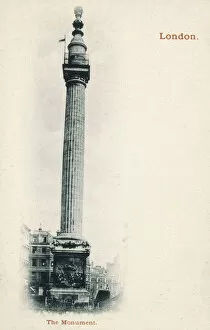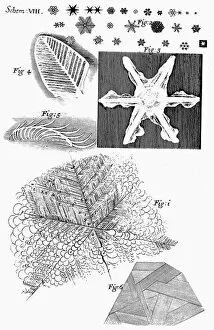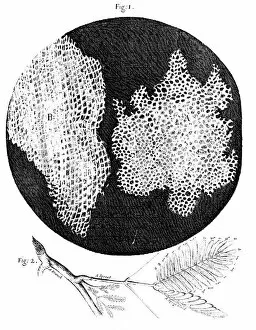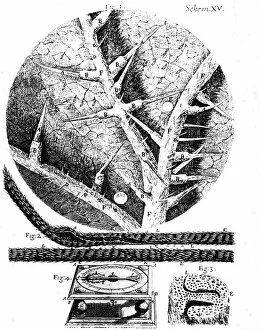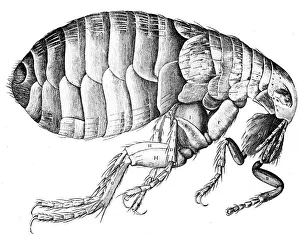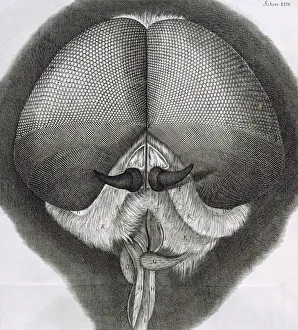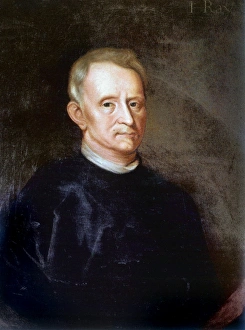Hooke Collection
"Hooke: A Glimpse into the Microscopic World and Beyond" Step into the fascinating world of Robert Hooke
All Professionally Made to Order for Quick Shipping
"Hooke: A Glimpse into the Microscopic World and Beyond" Step into the fascinating world of Robert Hooke, a brilliant scientist whose discoveries revolutionized our understanding of the natural world. Through his groundbreaking work, Hookes Law on elasticity of materials came to light, beautifully illustrated by the stretching of a spring. Delve deeper into Hooke's microscopic explorations as he unveils the hidden secrets of nature. Witness his astonishing observations through illustrations like the intricate structure of a louse seen under his microscope, captured in an exquisite copper engraving from Hookes Micrographia in 1665. Marvel at Hooke's pioneering use of microscopy to examine cork cells, forever immortalizing them as "cellulae" - marking their first mention in history. The delicate engravings from Robert Hookes Micrographia transport us back to this pivotal moment in scientific discovery. Venture beyond microcosms and explore grand landscapes that captivated Hooke's imagination. From New Lodge or White Lodge nestled within Richmond Park to West Dorset DT8 3 Map showcasing picturesque countryside beauty, experience nature through Hooke's eyes. Witness how innovation transcends time with 18th-century hygrometers designed for measuring humidity levels – a testament to Hooke's influence on scientific instruments throughout history. Unfold pages filled with awe-inspiring illustrations such as a louse perched delicately on a strand of hair from Micrographia – reminding us that even tiny creatures can hold great wonder when observed closely. Travel through time and space as we encounter iconic landmarks like London's Monument and The College of Physicians in Warwick Lane. These historic sites bear witness to Hooke's lasting impact on society and science alike. Discover glimpses into daily life during Hooke’s era with depictions like Old Bethlehem Hospital in Moorfields or the entrance to Haberdashers Almshouses in Pitfield Street, Shoreditch, London.


